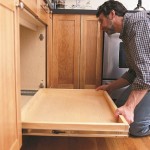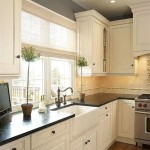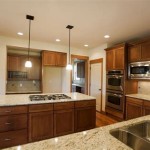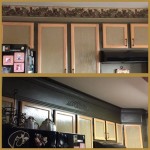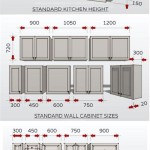Kitchen Under Cabinet LED Lighting Ideas
Kitchen under-cabinet lighting significantly enhances a kitchen's functionality and aesthetic appeal. Strategically placed LED lights illuminate countertops, making food preparation safer and easier, while simultaneously adding a layer of ambiance and sophistication to the space. The relatively low energy consumption of LED technology makes it a sustainable and cost-effective option for modern kitchens. A well-lit kitchen is not only practical but also creates a more inviting and enjoyable atmosphere.
The selection of under-cabinet lighting requires careful consideration of various factors, including the size of the kitchen, the existing lighting scheme, the desired level of illumination, and the architectural style of the space. Various types of LED fixtures are available, each offering unique benefits and drawbacks. Understanding these distinctions is essential for making an informed decision that aligns with both functional needs and aesthetic preferences.
Furthermore, the installation process can range from simple DIY projects to more complex installations requiring professional assistance. Determining the appropriate approach depends on individual skill levels, the type of lighting chosen, and the existing electrical infrastructure. Proper planning and execution are crucial for achieving optimal results and ensuring the longevity of the lighting system.
Exploring Different Types of LED Under-Cabinet Lighting
The market offers a wide array of LED under-cabinet lighting options, each designed to cater to specific needs and preferences. Understanding the characteristics of each type can help homeowners select the most appropriate option for their kitchen.
LED Strip Lights: These are flexible, adhesive-backed strips containing numerous small LEDs. They are easily cut to length and can be installed in continuous runs, providing uniform illumination across the entire underside of the cabinets. LED strip lights are particularly well-suited for kitchens with long stretches of cabinets lacking obstructions. They typically offer dimming capabilities and color temperature adjustability, allowing customization of the lighting ambiance. The ease of installation is a significant advantage, as they can often be applied directly to the cabinet underside without requiring any specialized tools or electrical expertise. However, the adhesive backing may degrade over time, requiring occasional replacement. Furthermore, the individual LEDs are often closely spaced, which can sometimes result in a slightly diffused or less focused light output compared to other types of LED fixtures.
LED Puck Lights: These small, round lights are typically surface-mounted to the underside of the cabinets. They provide focused beams of light, ideal for highlighting specific areas of the countertop, such as task areas or accent pieces. LED puck lights are available in both wired and battery-operated versions, offering installation flexibility. Wired versions provide consistent power and brightness, while battery-operated versions are suitable for areas where electrical access is limited. Puck lights are typically more expensive than LED strip lights and may require drilling pilot holes for installation. The individual lights are often more powerful than individual LEDs on a strip, offering a brighter and more concentrated light output. However, the concentrated light often requires multiple pucks and more planning to avoid uneven lighting.
LED Light Bars: These are rigid fixtures containing multiple LEDs, typically enclosed in a durable housing. They offer a sleek and modern aesthetic and provide a more consistent and even light output compared to strip lights or puck lights. LED light bars are often dimmable and can be daisy-chained together, simplifying the wiring process for multiple fixtures. They are typically more expensive than strip lights but offer superior performance and longevity. Installation often requires mounting brackets or screws, ensuring a secure and stable installation. Light bars provide a broader beam of light compared to puck lights, making them suitable for illuminating larger countertop areas. The enclosed design provides protection for the LEDs, extending their lifespan and improving their resistance to dust and moisture.
Choosing the right type of LED lighting depends on specific project requirements, budget considerations, and aesthetic goals. Careful assessment of these factors will ensure the selection of a lighting solution that provides optimal performance and enhances the overall kitchen environment.
Optimizing Light Output and Color Temperature
Beyond selecting the type of LED fixture, optimizing light output and color temperature is crucial for achieving the desired atmosphere and functionality in the kitchen. Light output, measured in lumens, determines the brightness of the light. Color temperature, measured in Kelvin (K), determines the warmth or coolness of the light. The selection of these parameters significantly impacts the overall aesthetic and usability of the kitchen.
Light Output (Lumens): The appropriate lumen output depends on the size of the kitchen, the color of the countertops, and the desired level of illumination. Dark countertops absorb more light, requiring higher lumen output to achieve adequate brightness. Generally, 300-400 lumens per linear foot of under-cabinet lighting is recommended for task lighting. For ambient lighting, a lower lumen output may be sufficient. Dimmable LED fixtures offer the flexibility to adjust the light output to suit different tasks and moods. When measuring lumens, it is important to compare actual lumens emitted, not just the wattage of the LED. Some LEDs are more efficient than others, providing more lumens per watt consumed.
Color Temperature (Kelvin): Color temperature significantly influences the perceived warmth or coolness of the light. Lower Kelvin values (2700K-3000K) produce warm, yellowish light, creating a cozy and inviting atmosphere. Higher Kelvin values (4000K-5000K) produce cool, bluish-white light, providing a brighter and more energetic feel. The ideal color temperature depends on personal preference and the overall design of the kitchen. Warm white light is often preferred for traditional kitchens, while cool white light is often favored in contemporary kitchens. Some LED fixtures offer adjustable color temperature, allowing homeowners to customize the lighting to suit their preferences. The color of the kitchen cabinets, countertops, and backsplashes can influence the perception of color temperature. For example, warm-toned cabinets may benefit from cooler light, while cool-toned cabinets may benefit from warmer light.
Experimentation and careful consideration of these factors are essential for achieving the desired lighting effect. Testing different lumen outputs and color temperatures before installation can help ensure that the final result meets expectations. Consulting with a lighting professional can provide valuable insights and guidance in selecting the optimal lighting parameters for a specific kitchen environment.
Installation Considerations and Best Practices
Proper installation is crucial for ensuring the longevity and optimal performance of under-cabinet LED lighting. The installation process varies depending on the type of fixture, the existing electrical infrastructure, and individual skill levels. Prior planning and adherence to best practices are essential for a successful installation.
Planning and Preparation: Before beginning the installation, carefully plan the layout of the lights. Determine the placement of each fixture, ensuring even illumination across the countertop. Consider the location of electrical outlets and the need for any additional wiring. Gather all necessary tools and materials, including a drill, screwdriver, wire strippers, wire connectors, and measuring tape. If installing wired fixtures, ensure that the power is turned off at the circuit breaker before starting any electrical work. It is essential to consult local electrical codes and obtain any necessary permits before undertaking electrical installations. Determine the route of the wires and plan for concealing them behind cabinets or within walls. Proper planning will minimize errors and ensure a professional-looking installation.
Installation Techniques: For LED strip lights, carefully clean the underside of the cabinets before applying the adhesive backing. Ensure that the surface is dry and free of dust or grease. Cut the strip lights to the desired length, using scissors or a utility knife. Connect the strip lights to the power supply, using wire connectors or soldering. For LED puck lights, drill pilot holes in the underside of the cabinets, using a drill bit that is slightly smaller than the diameter of the screws. Secure the puck lights to the cabinets, using screws. For LED light bars, install mounting brackets to the underside of the cabinets, using screws. Attach the light bars to the mounting brackets. Connect the light bars to the power supply, using wire connectors or daisy-chaining cables. Ensure that all wiring connections are secure and properly insulated.
Wiring and Safety: If installing wired fixtures, follow all electrical safety precautions. Use appropriately sized wiring for the current load. Properly ground all electrical components. Use wire connectors that are rated for the specific voltage and amperage. If unsure about any aspect of the electrical installation, consult with a qualified electrician. Faulty wiring can pose a fire hazard and should be avoided at all costs. Regularly inspect the wiring and connections for any signs of damage or wear. Replace any damaged wiring immediately. It is also important to install a GFCI (ground fault circuit interrupter) outlet in the kitchen to protect against electrical shock.
By adhering to these installation considerations and best practices, homeowners can ensure a safe, efficient, and aesthetically pleasing under-cabinet LED lighting system. A well-installed lighting system will provide years of reliable performance and enhance the functionality and ambiance of the kitchen.

How To Choose And Install Led Strip Lights For Kitchen Cabinets

Under Cabinet Kitchen Lighting Pictures Ideas From
Led Under Cabinet Lighting Projects How To Use Strip Lights

How To Buy Under Cabinet Lighting Ideas Advice Lamps Plus

How To Install Led Under Cabinet Lighting In Kitchen Furniture Design Light Sp Z O

Undercabinet Lighting Ideas Light Supplier

Why Under Cabinet Kitchen Lights Are A Bright Addition To Your Home

5 Types Of Under Cabinet Lighting Pros Cons 1000bulbs Blog
Led Under Cabinet Lighting Projects How To Use Strip Lights

How To Buy Under Cabinet Lighting Ideas Advice Lamps Plus
Related Posts


